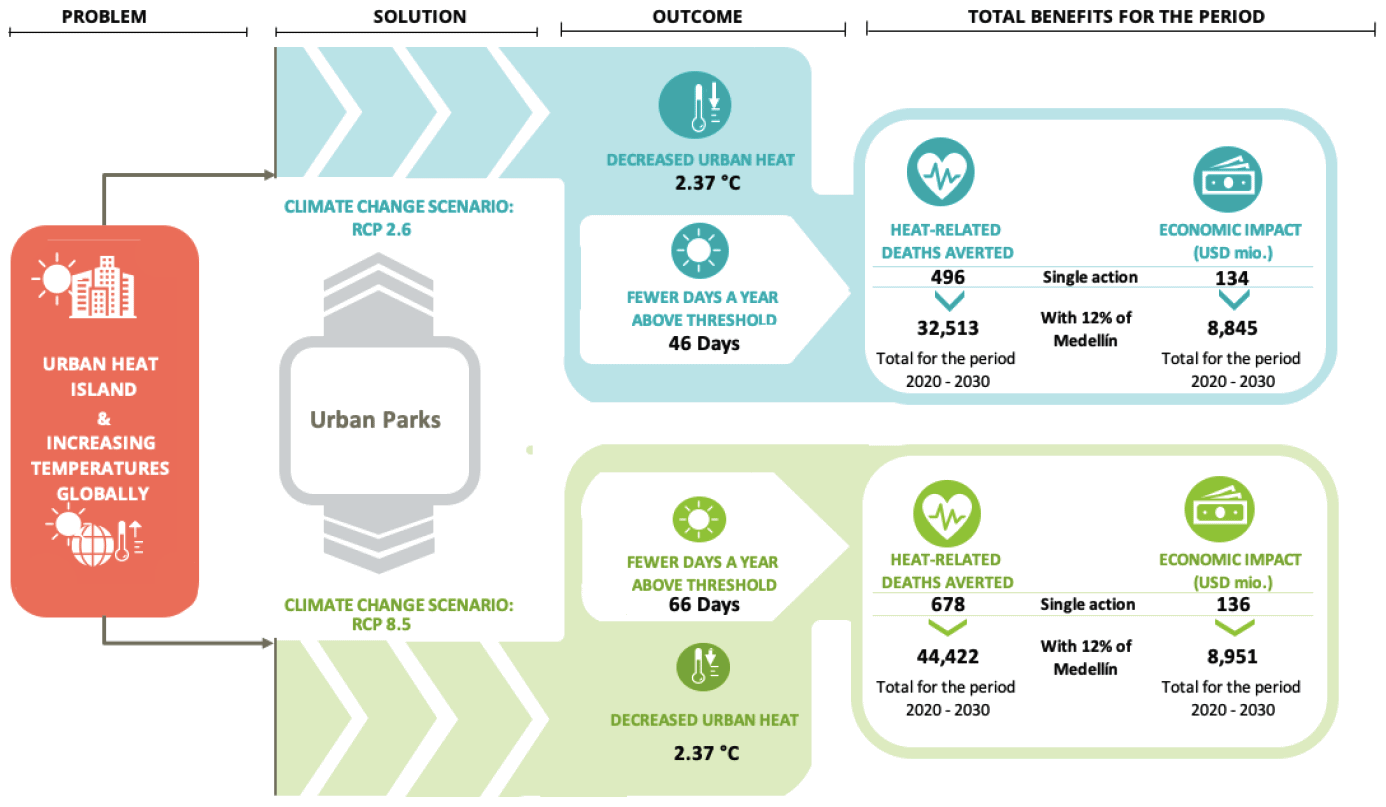This heat calculator helps cities invest in the most effective cooling solutions
How does a city know which cooling measures will bring temperatures down? A new tool can help calculate the potential benefits of cooling projects, so money is used wisely.
T
he impact of extreme temperatures on health and well being is rising up policy agendas in many cities. The Excel-based Heat Resilient Cities benefits tool has been designed to help city planners and decision-makers to quantify the health, economic and environmental benefits of common urban heat adaptation actions. Cities can use this information to make the case for urban heat adaptation investments, and to prioritise the actions that are likely to have the most positive impact locally.
Users can calculate the benefits brought by specific parks and green infrastructure, water bodies such as rivers and lakes, and cool and vegetative surfaces. The tool can also extrapolate results from these specific investments to calculate the benefits of scaling-up across the whole of the city.
The tool was developed with guidance from cities which participate in the C40 Cool Cities Network, and from urban heat and health impact specialists. It has been piloted with the cities of Medellín and São Paulo – read below for a flavour of the results for both cities, or the case studies for full details.
Access the Heat Resilient Cities benefits tool and calculate benefits for your city’s actions via the Download button on this page. The tool will also soon be available here in Spanish. Instructions for using the tool are given in the first two tabs (Intro and Workflow) of the Excel file. Contact Neuni Farhad and Snigdha Garg with any questions about how to use the tool and interpret the results. You can also learn how the tool was developed in the methodology note.
Green corridors in Medellín
Medellín’s green corridors are central pillar of the city’s strategy for reducing urban heat. They also provide residents with more green space, including along key cycle routes. Medellín built 36 green corridors between 2016 and 2019; the results generated with the Heat Resilient Cities benefits tool, summarised below, support further expansion of the city’s green infrastructure. Read the case study, which is available in English and Spanish, for the details.

Heading
To revive urban natural environments and reduce extreme heat, the Department of Environment initiated the 100 Parks for São Paulo programme in 2005. By 2012, the number of city parks had increased from 34 to 100, covering an area of over 90 million square metres. Now, the city is planning to revitalise several watercourses to further reduce heat and flooding, improve water quality and protect the health of people living in affected areas. The Riacho do Ipriranga is among these watercourses. Using the Heat Resilient Cities benefits tool, the City of São Paulo has made a first assessment of the potential benefits, which are summarised below, which is helping to make the case for this investment. Read the case study, which is available in English and Portuguese, for the details.

Photo by Tazio Viadana
The ideas presented in this article aim to inspire adaptation action – they are the views of the author and do not necessarily reflect those of the Global Center on Adaptation.